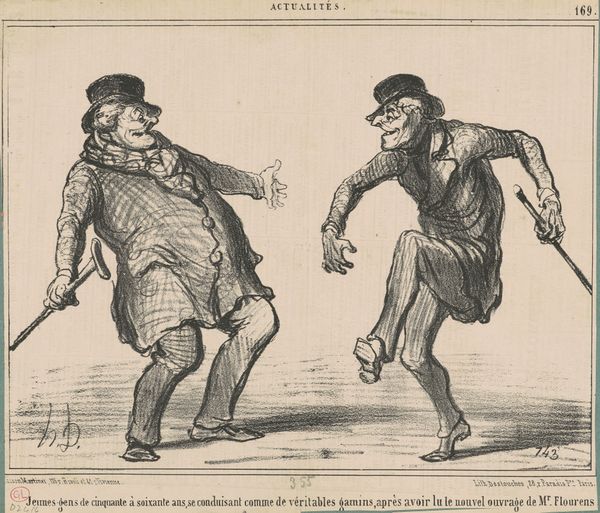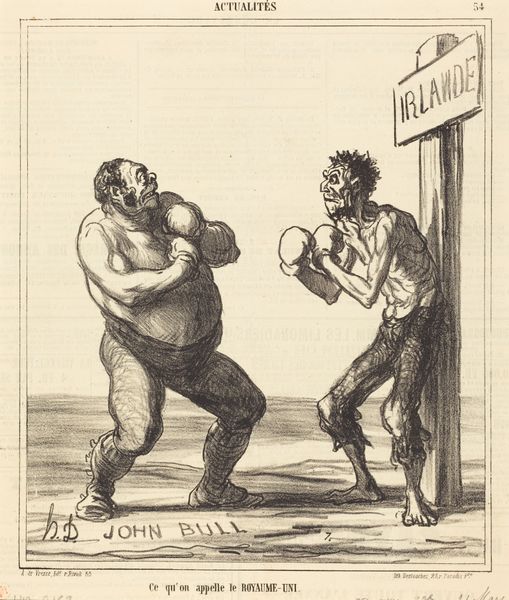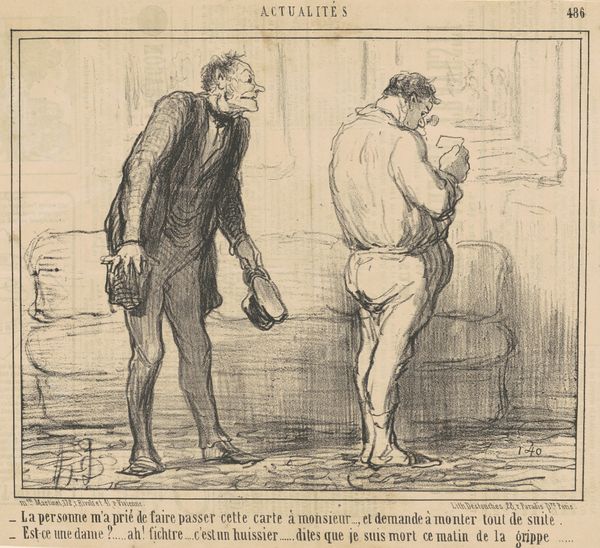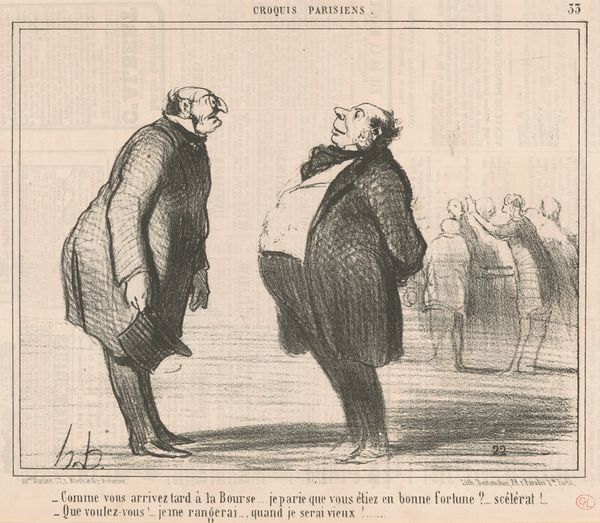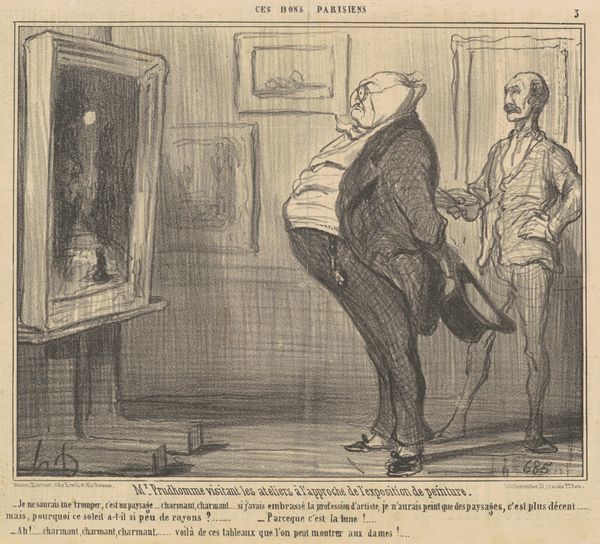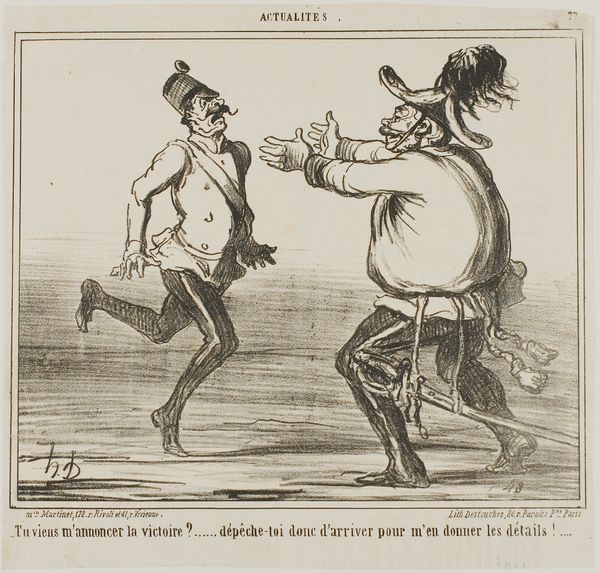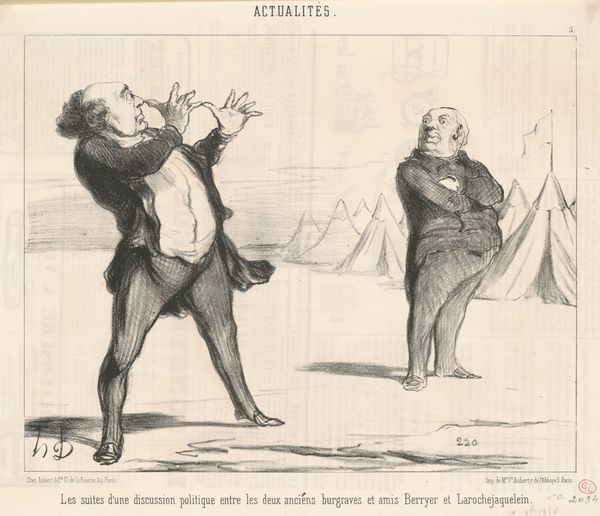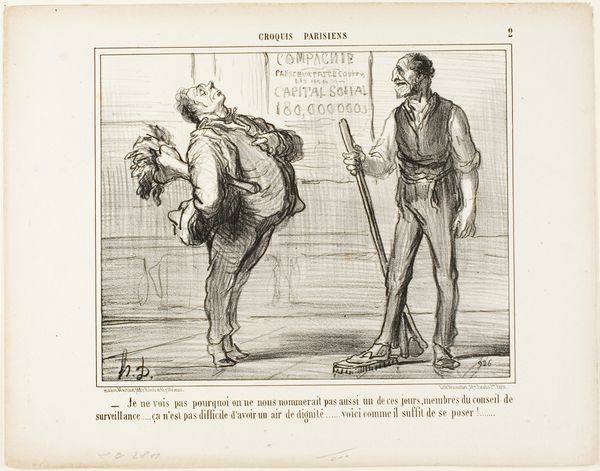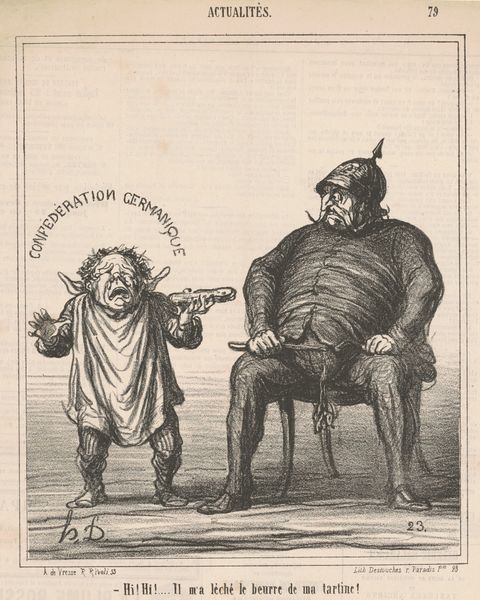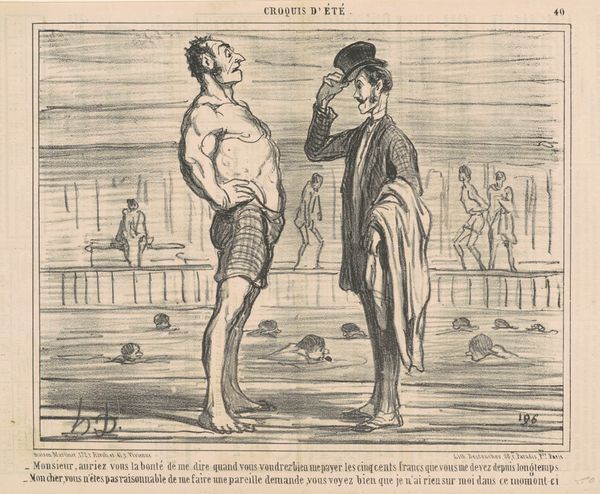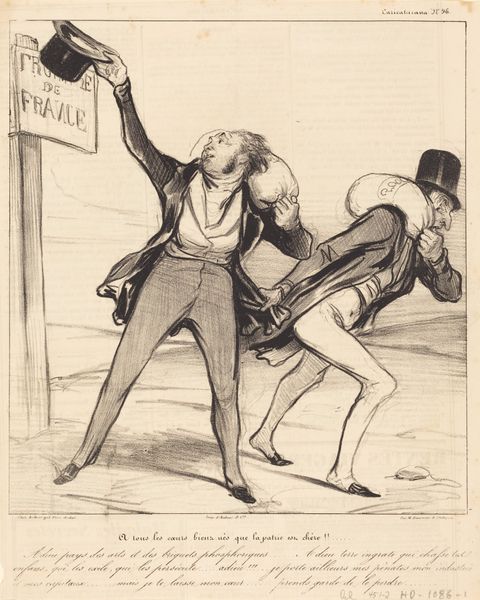
#
comic strip sketch
#
quirky sketch
# print
#
pencil sketch
#
sketch book
#
personal sketchbook
#
idea generation sketch
#
sketchwork
#
sketchbook drawing
#
storyboard and sketchbook work
#
sketchbook art
Copyright: National Gallery of Art: CC0 1.0
Editor: Here we have Honoré Daumier's print, "C'est pourtant bien fâcheux pour…", created sometime in the 19th century. It looks like a lithograph. The figures are comical and their bodies are quite exaggerated. What do you see in this piece? Curator: From a materialist perspective, consider the mass production of prints in 19th century France. Lithography democratized art, making it accessible to a wider audience, challenging the elite art establishment. This particular print is interesting because of how it represents the consumption habits of Parisians, and class is very apparent through clothing. What do these figures tell us about labour and its representation? Editor: Well, one is very portly and almost nude, the other slim in striped pajamas. It feels like the figures' bodies themselves become commodities in this image. There’s almost a sense of critique of bourgeois indulgence in contrast to possibly working class...struggle, maybe? Curator: Exactly. Daumier, through printmaking, is not just creating art, he's also participating in a wider commentary about the changing economic structures of Paris. This method of image creation inherently connects with mass consumption. Do you think Daumier is judging this production, complicit with the growth or possibly subversive? Editor: Hmm, the text suggests there is indeed social commentary with these "good parisians." The contrast hints at some level of...mockery of society! Thanks for illuminating this in this way! Curator: Of course. Examining the materials and processes helps uncover deeper meaning about societal consumption.
Comments
No comments
Be the first to comment and join the conversation on the ultimate creative platform.
